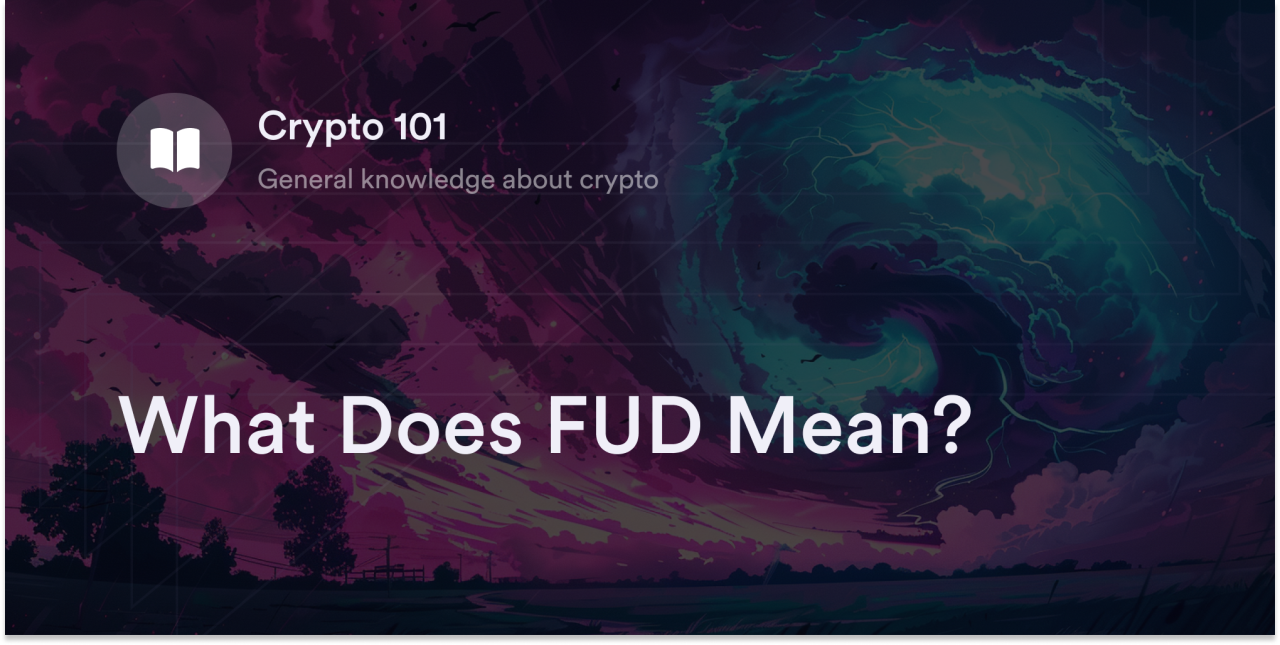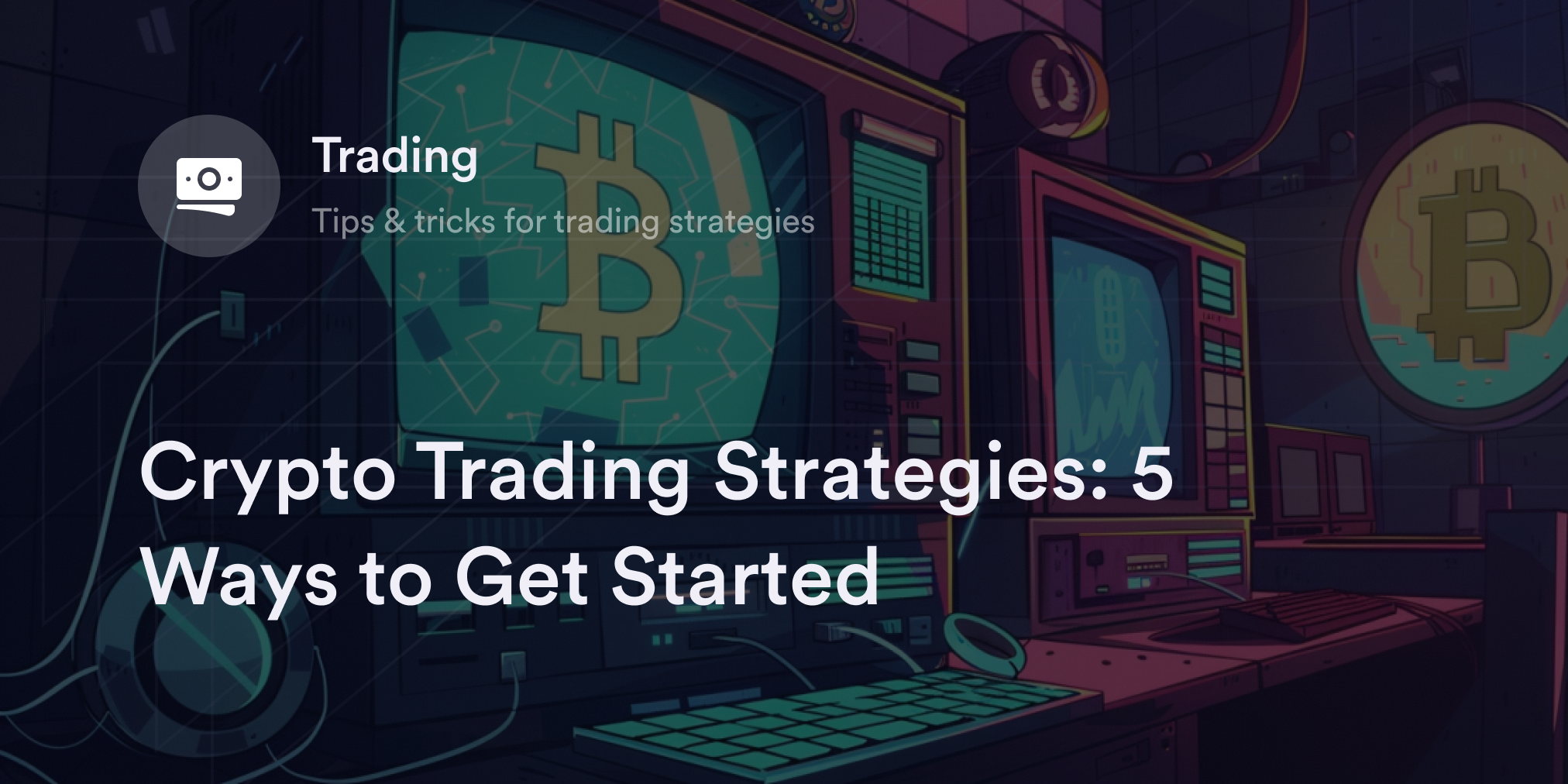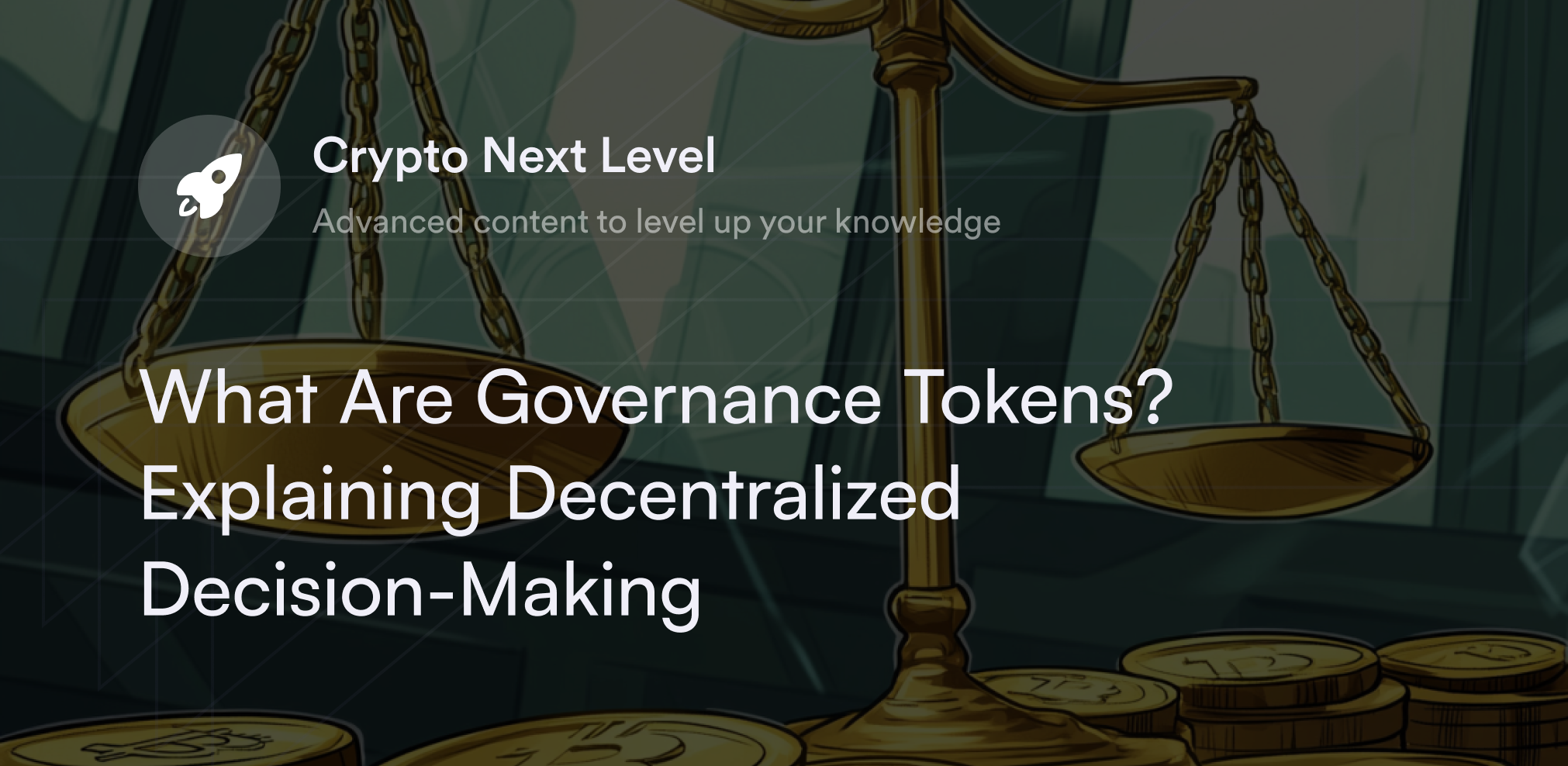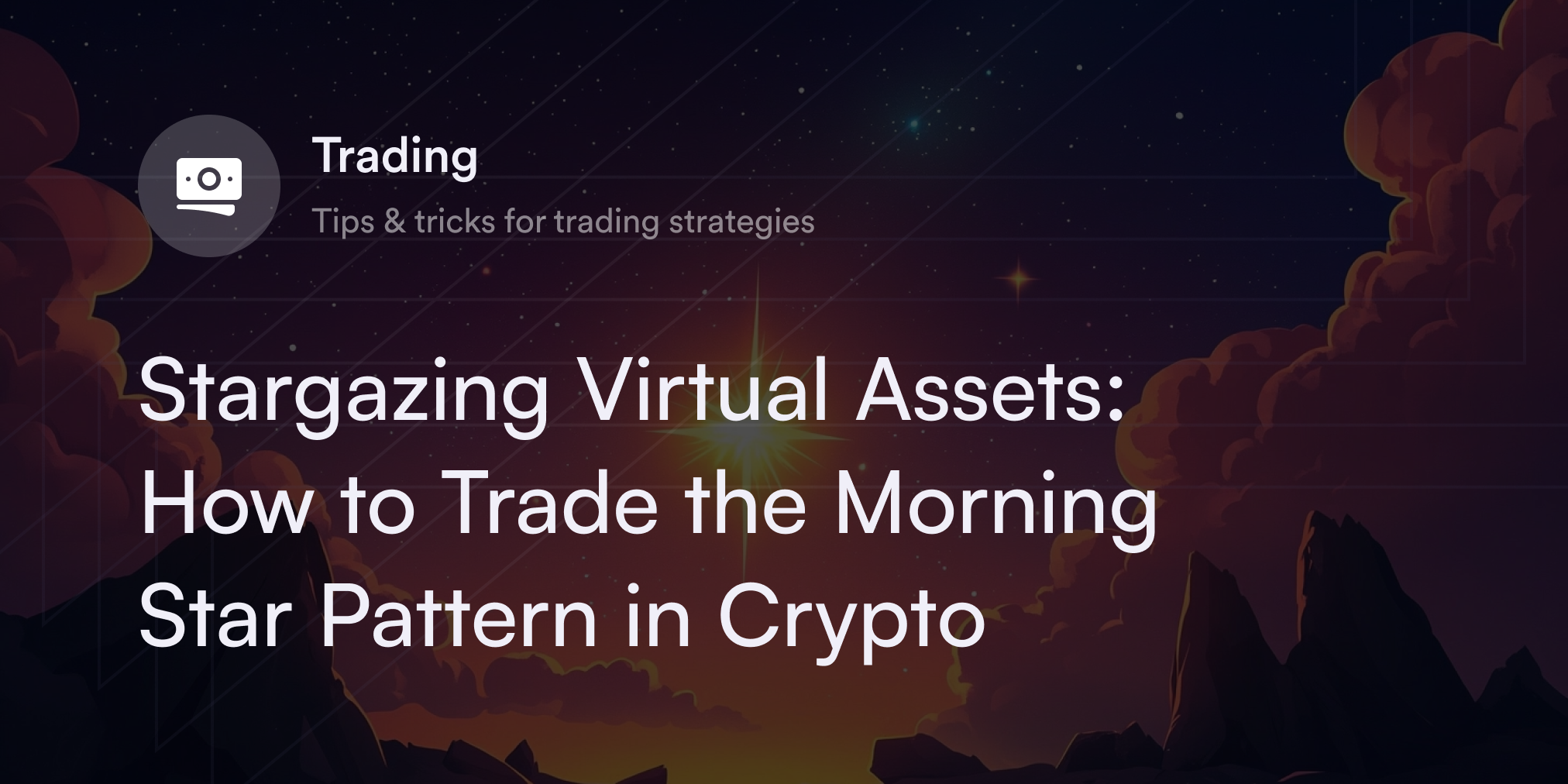


Psychologists are still debating the impact of social media on mental health, but at the very least most agree sites like Twitter and Instagram negatively affect concentration. In fact, some studies show most of today’s internet users stay on one webpage for only 47 seconds, suggesting reduced attention spans.
In the fast-paced crypto market, traders are even more impatient for news on their favorite coins and tokens, leading crypto commentators to rely on acronyms when reporting on the digital assets sector. Along with “HODL” and “FOMO,” “FUD” is a widely used acronym in crypto social media, and it’s one of the most telling on how traders feel about crypto prices.
Truth be told, a single FUD event possesses the power to disrupt the entire crypto ecosystem. So if you’re interested in trading digital assets, you should learn the meaning of FUD in crypto and how to react when FUD breaks out.
What is FUD in Crypto, and What Does it Stand for?
FUD stands for “fear, uncertainty, and doubt,” and it refers to any negative opinions or news related to the cryptocurrency market. Although it’s commonly associated with digital assets like Bitcoin (BTC) and Ethereum (ETH), its history goes back to the '90s when IBM used it to describe marketing tactics that tech giants leveraged to dissuade customers from purchasing competitor products.
In crypto––when someone “spreads FUD”, they raise concerns or doubts about a crypto project or the entire market, typically on social media. Whether the FUD is from a credible, fact-based news source or complete speculation, the essential feature of FUD is always the same: to make people feel worried. Since FUD is synonymous with negative price performance, it’s common to see more traders use the acronym when cryptocurrencies fall in value during corrections (also called bear markets). The more crypto traders panic about a FUD-related story, the more likely crypto prices will drop.
When Does FUD Happen in the Crypto Market?
FUD can occur whenever someone posts a negative story related to cryptocurrency. While many FUD stories appear to be legitimate and objective news, some are unfounded rumors or opinions that inspire fear in the crypto marketplace. FUD stories often start with a post on social media sites like Twitter, Discord, or Telegram. And once these posts go viral, they often appear in mainstream news outlets inside and outside the crypto sector. For example, if financial publications like Bloomberg, Forbes, or Yahoo Finance report on controversies in the crypto market, traders often classify it as a FUD piece.
Famous Examples of FUD in the Crypto Market
Throughout the history of cryptocurrency, FUD events have impacted the price dynamics of different digital assets. For example, in May 2021, Tesla CEO Elon Musk tweeted his company no longer accepted Bitcoin to purchase electric vehicles due to concern over BTC’s increasing use of fossil fuels. Before this announcement, Musk was not only an open advocate of cryptocurrencies on social media, but he was also responsible for Dogecoin’s skyrocketing growth. The news of his apparent reversal spooked some traders and Bitcoin’s price plunged almost 10%.
Another significant FUD event in crypto history happened on November 2, 2022, when crypto news firm CoinDesk published an investigative article on crypto hedge fund Alameda Research’s balance sheet. In the days following CoinDesk’s report, news began circulating that centralized crypto exchange (CEX) FTX allegedly transferred user funds to Alameda Research to cover billions in losses. FTX eventually paused customer withdrawals and filed for bankruptcy, owing its customers $8 billion in assets. Since FTX was one of the cryptocurrency market’s largest and most publicized CEXs, news of its downfall triggered a massive selloff in Bitcoin and altcoins.
How Does Crypto FUD Affect Traders?
The purpose of FUD is to stir up doubts and anxiety about a crypto project, which sometimes leads traders to sell some or all of their positions. However, traders need to believe a FUD story is genuine and has a materially negative impact on the cryptocurrencies they hold to influence them to panic sell. If a crypto trader doesn’t think a FUD story is legitimate or views the FUD as a real but temporary concern, they probably won’t sell.
In some instances, crypto traders buy their favorite cryptocurrencies when FUD increases to pick up digital assets at a discount (colloquially called buying the dip). Alternatively, traders sometimes open short positions when FUD strikes the crypto market to preserve their portfolio’s value. For context, shorting means profiting when a cryptocurrency falls in value; many traders use derivative products such as perpetual swaps to make money from a crypto asset’s price decline.
What’s the Difference Between FOMO and FUD?
FOMO, short for “fear of missing out,” is the polar opposite of FUD. It’s used to express extreme feelings of greed in the cryptocurrency market. When positive news about a coin breaks (e.g., a country accepting Bitcoin as legal tender or a celebrity endorsing cryptocurrency), it can trigger panic buying in the crypto market as traders clamor to open positions in a coin or token. Although some people rush to get into a cryptocurrency during the height of FOMO mania, others exit positions at a premium and wait for the enthusiasm to cool before buying back into a crypto project. Alternatively, day traders sometimes open positions in cryptocurrencies already in a FOMO bull run to capitalize on the upward momentum and try to make a quick profit.
How do Crypto Traders Monitor FUD?
Crypto traders typically rely on their social media feeds to monitor FUD in the digital assets market. Twitter, Telegram, and Discord have hundreds of lively crypto communities, and sometimes major FUD-related stories start on these platforms. Although all major FUD news reaches social media at some point, crypto news organizations like CoinDesk, CoinTelegraph, or Decrypt often publish influential FUD pieces. To stay up-to-date on the latest alpha in the crypto news cycle, traders often subscribe to multiple reputable crypto-related publications or podcasts and scan the top headlines daily.
Website Alternative.me also put together a popular tool called the Crypto Fear & Greed Index, which calculates the daily crypto market sentiment. Every day, Alternative.me measures multiple aspects of the cryptocurrency market (e.g., price volatility, social media sentiment, and surveys) and publishes an index score of 0–100. While zero represents extreme fear and pessimism, 100 symbolizes excessive greed. So the lower the score, the more FUD in the crypto space.
Another method involves a few technical indicators to gauge fear or greed. For example, the Crypto Volatility Index (CVI) measures the average crypto price fluctuations. Generally, high volatility and CVI score indicate a greater likelihood of FUD impacting the market.
Some traders also use the Bitcoin dominance score to track where most of the money is in the crypto market. BTC dominance tells traders what percent of the entire crypto market cap is in Bitcoin, which some believe highlights the risk appetite in the crypto industry. Since Bitcoin is the largest and oldest cryptocurrency, a few crypto traders believe higher BTC dominance scores mean most market participants are rushing to safer crypto assets, meaning there’s probably more FUD than FOMO in the market. But as Bitcoin dominance falls, it may indicate more traders are willing to diversify their portfolios by opting for riskier, smaller, and more volatile altcoins.
Review Essential Crypto Terms on dYdX Academy
Crypto traders love using acronyms, slang, and memes to describe the latest crypto news and price movements. So, the more crypto lingo people know, the easier it is to understand crypto market sentiment on social media. For those new to crypto terms like FUD, HODL, or FOMO, dYdX Academy has dozens of beginner-friendly virtual asset vocabulary guides.
Not only this, but we also offer eligible traders Bitcoin and altcoin perpetual swaps on our low-fee decentralized exchange. Discover dYdX’s latest crypto derivatives offerings and features on our official blog, and eligible traders can start trading on dYdX today.
Disclaimer
The content of this article (the “Article”) is provided for general informational purposes only. Reference to any specific strategy, technique, product, service, or entity does not constitute an endorsement or recommendation by dYdX Trading Inc., or any affiliate, agent, or representative thereof (“dYdX”). Use of strategies, techniques, products or services referenced in this Article may involve material risks, including the risk of financial losses arising from the volatility, operational loss, or nonconsensual liquidation of digital assets. The content of this Article does not constitute, and should not be considered, construed, or relied upon as, financial advice, legal advice, tax advice, investment advice, or advice of any other nature; and the content of this Article is not an offer, solicitation or call to action to make any investment, or purchase any crypto asset, of any kind. dYdX makes no representation, assurance or guarantee as to the accuracy, completeness, timeliness, suitability, or validity of any information in this Article or any third-party website that may be linked to it. You are solely responsible for conducting independent research, performing due diligence, and/or seeking advice from a professional advisor prior to taking any financial, tax, legal, or investment action.
You may only use the dYdX Services in compliance with the dYdX Terms of Use available here, including the geographic restrictions therein.
Any applicable sponsorship in connection with this Article will be disclosed, and any reference to a sponsor in this Article is for disclosure purposes, or informational in nature, and in any event is not a call to action to make an investment, acquire a service or product, or purchase crypto assets. This Article does not offer the purchase or sale of any financial instruments or related services.
By accessing this Article and taking any action in connection with the information contained in this Article, you agree that dYdX is not responsible, directly or indirectly, for any errors, omissions, or delays related to this Article, or any damage, injury, or loss incurred in connection with use of or reliance on the content of this Article, including any specific strategy, technique, product, service, or entity that may be referenced in the Article.







